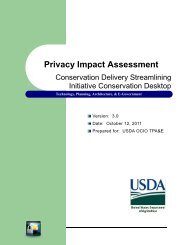ICS 200 â Lesson 2: ICS Features and Principles - US Department ...
ICS 200 â Lesson 2: ICS Features and Principles - US Department ...
ICS 200 â Lesson 2: ICS Features and Principles - US Department ...
You also want an ePaper? Increase the reach of your titles
YUMPU automatically turns print PDFs into web optimized ePapers that Google loves.
<strong>ICS</strong> <strong>200</strong> – <strong>Lesson</strong> 2: <strong>ICS</strong> <strong>Features</strong> <strong>and</strong> <strong>Principles</strong>Roaring River Flood: Scenario Update (continued)The st<strong>and</strong>ard <strong>ICS</strong> organizational structure helps the Incident Comm<strong>and</strong>er to:• Establish management functions.• Ensure unity of comm<strong>and</strong>• Maintain a clear chain of comm<strong>and</strong>.• Create a flexible organizational structure.• Manage the span of control.Planning is a critical <strong>ICS</strong> component for ensuring that there will be a comprehensive managementstrategy for the incident. Effective Incident Comm<strong>and</strong>ers manage by objectives. The objectivesare set forth in the Incident Action Plans, <strong>and</strong> drive all decisions about operations <strong>and</strong> resourceallocation. To facilitate the flow of information, the Incident Comm<strong>and</strong>er:• Requires all incident personnel to use common terminology.• Establishes integrated communication systems.Clear chain of comm<strong>and</strong>, delegation of authority, <strong>and</strong> resource tracking ensures personnelaccountability for assignments.Establishment of Comm<strong>and</strong>The first arriving authority at the scene, who has jurisdiction for the incident, establishes incidentcomm<strong>and</strong> <strong>and</strong> identifies the initial Incident Comm<strong>and</strong> Post (ICP). The initial IncidentComm<strong>and</strong>er will also:• Establish needed authorization <strong>and</strong> delegations of authority. These agreements allowthe Incident Comm<strong>and</strong>er to act on behalf of the Secretary, State Emergency Board <strong>and</strong> otherswho have responsibilities for the incident. They also allow the Incident Comm<strong>and</strong>er to makedecisions <strong>and</strong> allocate funds.• Begin establishing incident facilities. The next priority is to establish the incidentfacilities, beginning with the Incident Comm<strong>and</strong> Post.• Consider the need to transfer comm<strong>and</strong>.Responsibility for Incident Comm<strong>and</strong>Frequently, comm<strong>and</strong> does not stay with the initial Incident Comm<strong>and</strong>er. A primary principle of<strong>ICS</strong> is the ability to assign the most experienced <strong>and</strong> skilled person as the Incident Comm<strong>and</strong>er,regardless of that employee’s agency.When the Agency Administrator(s) assigns the Incident Comm<strong>and</strong>er, the Administrator(s)delegates the appropriate agency authorities to that Incident Comm<strong>and</strong>er.The process of moving the responsibility for incident comm<strong>and</strong> from one person to another iscalled transfer of comm<strong>and</strong>. All transfers of comm<strong>and</strong> must be approved by the agency.2
















